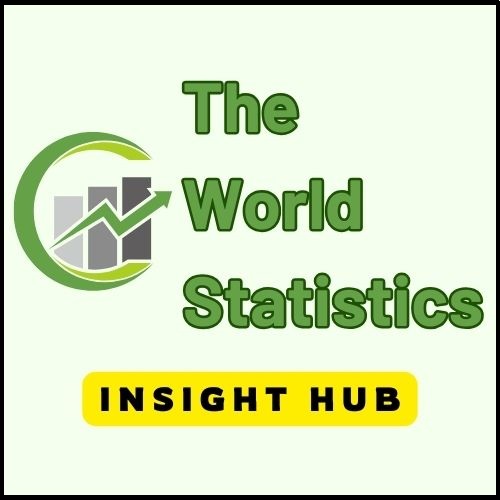What is the meaning of Obesity in US?
- A US individual whose weight exceeds what is typically considered normal for their height is described as overweight or obese.
Obesity in United States (US) 2024
- In 2024, an estimated slightly over 42% of American adults are classified as having obesity, while approximately 30.7% are considered overweight. Consequently, more than two-thirds of adults in the United States are either overweight or have obesity.
- The US States in South exhibits the highest obesity prevalence at 36.3%, trailed by the Midwest at 35.4%, the Northeast at 29.9%, and the West at 28.7%.
- Washington, D.C., boasts the lowest obesity rate, standing at a mere 24.7%. Following closely are Hawaii and Colorado, with rates of 25% and 25.1%, respectively.
Obesity has become a critical issue in the United States, presenting a multifaceted challenge that extends beyond individual health concerns to encompass broader societal and economic impacts. Characterized by an excessive accumulation of body fat, obesity rates have surged over recent decades, marking it as an epidemic of significant concern. The implications of obesity extend far beyond physical appearance, with profound health consequences such as increased risks of chronic conditions like heart disease, stroke, and diabetes.
Economically, obesity imposes a substantial burden on healthcare systems and society as a whole, impacting productivity and healthcare expenditures. Addressing this complex issue requires a comprehensive approach, encompassing preventive measures, healthcare interventions, and societal changes aimed at promoting healthier lifestyles and environments conducive to physical activity. By recognizing the urgency of the problem and implementing evidence-based strategies, it is possible to mitigate the impact of obesity and foster a healthier future for all Americans.

Obesity Statistics in the United States (US) 2024
| Aspect | Obesity Statistics |
|---|---|
| Obesity Prevalence | – 30.5% in 1999-2000 – 41.9% in 2017-March 2020 (NHANES, 2021) |
| Severe Obesity Prevalence | – 4.7% in 1999-2000 – 9.2% in 2017-March 2020 (NHANES, 2021) |
| Health Implications | – Obesity-related conditions: – Heart disease – Stroke – Type 2 diabetes – Certain types of cancer – Leading causes of preventable, premature death |
| Economic Impact | – Estimated annual medical cost of obesity in 2019: nearly $173 billion (in 2019 dollars) – Medical costs for adults with obesity were $1,861 higher than for people with a healthy weight |
| Implications | – Urgent need for comprehensive strategies to address and mitigate obesity epidemic – Prevention efforts crucial: – Promoting healthier lifestyles – Improving access to nutritious foods – Increasing opportunities for physical activity |
The US government statistics provided highlight the significant and concerning rise in obesity prevalence in the United States over the past few decades, as well as its associated costs and health implications.
- Obesity Prevalence: The prevalence of obesity in the US increased from 30.5% in 1999-2000 to 41.9% in 2017-March 2020, as per NHANES data. This represents a substantial increase over a relatively short period.
- Severe Obesity Prevalence: Alongside the increase in overall obesity rates, the prevalence of severe obesity also rose significantly, from 4.7% to 9.2% during the same timeframe. Severe obesity is associated with even greater health risks and complications than moderate obesity.
- Health Implications: Obesity is linked to various serious health conditions, including heart disease, stroke, type 2 diabetes, and certain types of cancer. These conditions are significant contributors to preventable, premature death in the United States.
- Economic Impact: The economic burden of obesity is substantial. In 2019, the estimated annual medical cost associated with obesity in the US was nearly $173 billion. This includes direct medical expenses related to treating obesity and its associated conditions, as well as indirect costs such as lost productivity.
- Disparity in Medical Costs: Individuals with obesity incur significantly higher medical costs compared to those with a healthy weight. On average, medical costs for adults with obesity were $1,861 higher than for people with a healthy weight. This highlights not only the personal health consequences of obesity but also the financial strain it places on the healthcare system and society as a whole.
There is a need for comprehensive strategies to address and mitigate the obesity epidemic in the United States. Prevention efforts, including promoting healthier lifestyles, improving access to nutritious foods, and increasing opportunities for physical activity, are essential for reducing obesity rates and alleviating its associated health and economic burdens.
Obesity in US – Demographic Group
| Demographic Group | Obesity Prevalence (%) |
|---|---|
| Non-Hispanic Black adults | 49.9 |
| Hispanic adults | 45.6 |
| Non-Hispanic White adults | 41.4 |
| Non-Hispanic Asian adults | 16.1 |
- Disparities in Obesity Prevalence: The US government data highlights significant disparities in obesity prevalence across different racial and ethnic groups. Non-Hispanic Black adults have the highest prevalence of obesity at 49.9%, followed by Hispanic adults at 45.6%. In contrast, Non-Hispanic White adults have a slightly lower prevalence at 41.4%, while Non-Hispanic Asian adults have the lowest prevalence at 16.1%.
- Racial and Ethnic Factors: These disparities may be attributed to various factors, including socio-economic status, cultural differences, access to healthcare, and dietary habits. Research suggests that socio-economic factors, such as income level and education, play a significant role in obesity prevalence. Additionally, cultural norms and dietary traditions within different racial and ethnic groups can influence eating habits and physical activity levels.
- Health Implications: High obesity prevalence rates among certain racial and ethnic groups have significant health implications. Obesity is associated with an increased risk of various chronic diseases, including heart disease, diabetes, and certain types of cancer. Therefore, the higher prevalence of obesity in Non-Hispanic Black and Hispanic adults may contribute to disparities in health outcomes and higher rates of obesity-related conditions within these populations.
- Public Health Interventions: Addressing disparities in obesity prevalence requires targeted public health interventions tailored to the specific needs of different racial and ethnic groups. This may include efforts to improve access to healthy foods, promote physical activity, and address socio-economic barriers to healthy living. Culturally sensitive approaches that respect and incorporate the diverse perspectives and experiences of different communities are essential for effective obesity prevention and intervention efforts.
- Preventive Measures: Recognizing the disparities in obesity prevalence among different demographic groups underscores the importance of preventive measures at both individual and population levels. Strategies aimed at promoting healthy lifestyles, including nutritious eating habits and regular physical activity, should be prioritized across all communities. Additionally, addressing broader social determinants of health, such as poverty and discrimination, is crucial for reducing disparities in obesity prevalence and improving overall population health.
Obesity in US – Age Group
| Age Group | Obesity Prevalence (%) |
|---|---|
| 20 to 39 years | 39.8 |
| 40 to 59 years | 44.3 |
| 60 and older | 41.5 |
- Age-related Trends: The US government data reveals a notable trend in obesity prevalence across different age groups. Among adults aged 20 to 39 years, the prevalence of obesity is 39.8%. This rate increases to 44.3% among adults aged 40 to 59 years and slightly decreases to 41.5% among those aged 60 and older.
- Middle-aged Adults: The highest obesity prevalence is observed among adults aged 40 to 59 years, indicating that middle age is a critical period for obesity development. This finding aligns with existing research suggesting that individuals in their middle years may experience lifestyle changes, such as decreased physical activity and changes in dietary habits, which contribute to weight gain.
- Health Implications of Aging: While obesity prevalence decreases slightly among adults aged 60 and older compared to the middle-aged group, the prevalence remains relatively high. This highlights the importance of addressing obesity among older adults, as excess weight can exacerbate age-related health conditions and reduce overall quality of life.
- Long-term Health Outcomes: Obesity in younger adulthood may have long-term implications for health outcomes later in life. Individuals who develop obesity at a younger age may be at increased risk for chronic diseases such as heart disease, diabetes, and certain cancers as they age. Therefore, early intervention and prevention efforts targeting younger adults are crucial for mitigating the long-term health consequences of obesity.
- Public Health Strategies: The age-related trends in obesity prevalence underscore the need for targeted public health strategies that address the unique needs of different age groups. Prevention efforts aimed at young adults should focus on promoting healthy lifestyle behaviors, such as regular physical activity and balanced nutrition, to prevent obesity onset. Additionally, interventions targeting middle-aged and older adults should emphasize weight management and healthy aging to reduce obesity-related health risks and improve overall well-being.
Childhood Obesity in America
In 2024, approximately 20% of children aged 2 to 19 in the United States are affected by obesity, totaling more than 14.7 million children and adolescents.
Childhood obesity in America is a pressing public health concern, with rates indicating a critical need for intervention. Afflicting children across diverse age groups, it poses substantial risks to long-term health and well-being. Addressing this issue demands multifaceted approaches involving preventive measures, educational initiatives, and community interventions.
By promoting healthier lifestyles, improving access to nutritious foods, and fostering environments conducive to physical activity, it is possible to mitigate the prevalence of childhood obesity and alleviate its associated health burdens. Effective strategies must prioritize early intervention and collaboration across sectors to ensure the well-being of future generations.
| Age Group | Obesity Prevalence (%) |
|---|---|
| Ages 12–19 years | 22.2 |
| Ages 6–11 years | 20.7 |
| Ages 2–5 years | 12.7 |
- Age-specific Trends: The US government data reveals varying obesity prevalence rates across different age groups of children and adolescents. Among adolescents aged 12–19 years, the prevalence of obesity is the highest at 22.2%, followed by children aged 6–11 years at 20.7%, and children aged 2–5 years at 12.7%. This indicates that the likelihood of obesity tends to increase with age during childhood and adolescence.
- Early Intervention Importance: The relatively lower obesity prevalence among children aged 2–5 years compared to older age groups suggests that early childhood may be a critical period for obesity prevention efforts. Interventions aimed at promoting healthy eating habits, physical activity, and overall wellness during the early years of life may help mitigate the risk of obesity later in childhood and adolescence.
- Adolescent Obesity Concerns: Adolescence emerges as a particularly vulnerable period for obesity development, with over one-fifth of adolescents aged 12–19 years affected. This finding underscores the importance of targeted interventions to address obesity among teenagers, as adolescence is a time of significant physiological, social, and behavioral changes that can influence weight status.
- Long-term Health Implications: Obesity during childhood and adolescence is associated with a higher risk of developing obesity-related health problems later in life, including type 2 diabetes, cardiovascular disease, and certain cancers. Therefore, addressing obesity during these formative years is crucial for reducing the risk of chronic health conditions and promoting long-term health and well-being.
- Public Health Strategies: The age-specific trends in obesity prevalence highlight the need for tailored public health strategies that address the unique needs and developmental stages of children and adolescents. Comprehensive approaches encompassing education, community interventions, policy changes, and healthcare initiatives are essential for preventing and managing obesity across different age groups.
Disclaimer: The data research report provided here is sourced from various channels, aiming for accuracy, but unable to guarantee every detail’s absolute precision. It is intended for informational purposes only, and users are urged to verify critical information independently before making decisions. We are not liable for any financial loss, errors, or damages arising from the use of this information. While our team strives for accuracy, the dynamic nature of data means we cannot verify every fact. Your understanding and discretion are valued.







